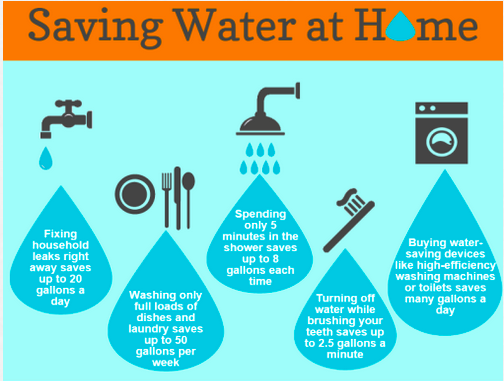Table of Content
- What checks are done for remortgage?
- How long does remortgaging take?
- How long does it take to release equity and receive the money?
- How much it costs for multiple refinances
- Should I use a financial adviser to remortgage?
- Can I remortgage my home?
- How much can I remortgage my house for and what is the cost?
A remortgage is your chance to negotiate better interest rates and terms. In this article we explain how remortgaging works, when you should consider remortgaging, how much you can borrow when remortgaging and roughly what it costs to remortgage. Although most fixed-rate deals allow you to overpay by 10% per year, they’ll charge you a penalty for anything over that. Your LTV is the single most important factor when it comes to deciding what interest rates a mortgage lender will offer. When it comes to remortgaging, you can do so with your current lender or explore the market for a better rate. Lenders add their own interest on top of the BOE base rate, and the market is a competitive one.
These are the same as SVR mortgages, although they include a discounted rate for a set amount of time. If your property has decreased in value since you took out your mortgage, your loan-to-value ratio will be higher. In this case you will find it difficult to find a better deal elsewhere.
What checks are done for remortgage?
Remortgaging early means switching to another mortgage before the term of your current deal is up. You’re unlikely to be able to release equity until you have had your mortgage for six months. But remember that this will increase the size of your mortgage, so your lender will have to make sure you meet its affordability requirements, and it may be restricted in the loan-to-value it offers.
Allow yourself time to consider your choices and total the costs. If you do find one, you probably won’t get the best possible interest rate, meaning you’ll pay thousands of dollars more in interest by the time you pay off your home loan. If you withdraw $20,000 in a cash-out refinance, you're taking over 90% of your equity. This means that you'll likely have trouble finding a lender that’s willing to service your refinance. In this scenario, it might be worth remortgaging early to invest in a buy to let property or use the extra capital for home improvements. I got an exhaustive answer to all the questions and everything was explained to me in a simple and clearly way.
How long does remortgaging take?
Barry has always made timely contact with us, particularly when our existing lender agreement i... I’ve just used Barry’s services for the second time upon expiry of the first mortgage he brokered for me. As with the 1st time, Barry provided options and advice, catering to my specific Mortgage requirements.
A homeowner would typically borrow the equivalent amount outstanding on their current loan for a remortgage if they are switching to a new rate. Still, they may borrow more if using the product to release equity. At the moment you can remortgage up to 90% of the property value. When you make your application to your new lender, you simply request the amount you will need to repay the loan with your current lender plus the amount of equity you want to release.
How long does it take to release equity and receive the money?
I really thought I’d struggle to get a mortgage after my previous debt problems but he gave me peace of mind and ensured I got the best deal ever. In most instances the lender will pay for the legal costs for the remortgage providing you use one of their solicitors who they instruct for you. You will not normally pay for these costs but only in some instances you may have to. Get all of our latest home-related stories—from mortgage rates to refinance tips—directly to your inbox once a week. Stay in the know with our latest home stories, mortgage rates and refinance tips.

The decision to take out a mortgage should be financially sound. This is something our advisers can advise you on to ensure you are making the right decision. Ensure the risk and exposure aren’t too high-some lenders can restrict the number of mortgages a single borrower can get from them, limiting their risk exposure. Make sure to review your financial situation with your lender and thoroughly weigh the cost and benefits. If you ask financial experts how many times is too many, the answers vary. Bankrate is compensated in exchange for featured placement of sponsored products and services, or your clicking on links posted on this website.
Sarah Li Cain is an experienced content marketing writer specializing in FinTech, credit, loans, personal finance and banking. Her work has appeared in Fortune 500 companies, publications and startups such as Transferwise, Discover, Bankrate, Quicken Loans and KeyBank. To get lower interest rates – by shopping around with other lenders. You can also try negotiating better rates with your current lender. A remortgage can also help to lock in lower interest rates before they go up. If you break your mortgage before the term is up, there will be a prepayment penalty.
Most lenders only allow you to refinance 80 – 90% of your loan value. Imagine that you pay off $50,000 of your home loan and have a remaining principal of $100,000 left on your mortgage. You want to do $30,000 worth of repairs, so you opt for a cash-out refinance.
You can expect your credit score to be affected any time you apply for finance. When people buy a home, their credit score usually takes a dip as credit scoring companies adjust to the new debt you’ve taken on. There is, however, a debate over whether you should get a two-year fixed-rate mortgage. On one hand, two-year fixed-rate mortgages don’t tie you into a long-term commitment and interest rates are historically lower. Whether you need to switch your mortgage because the fixed-rate ends, you can find a better deal or you want to raise more capital, remortgaging can prove to be a smart move for many homeowners.
I have used Barry twice and both times the service has been first class. He explained things clearly and simply and did not use complicated jargon. Before allowing you to remortgage, your new lender would need a valuation of your property so that they can be confident of its value. Do you still need the extra risk now that your home is safe, and you’ve paid off your mortgage? Even if you are financially secure, it is something you should be aware of. You may want to buy a buy-to-let, make home improvements, or take out a loan for a personal gift, such as a new car or holiday.
If you do purchase a product using a link, we will receive a payment. This will help us to support the content of this website and to continue to invest in our award-winning journalism. Families or first-time buyers may inherit an unencumbered property after a loved one dies. In these circumstances, the owner has 100% of the equity but not much cash. If the home has been inherited, banks are less likely to insist the property has been owned by the beneficiary of the inheritance for six months before the remortgage. Normally, it’s not advisable to remortgage early just to chase a cheaper interest rate because the early repayment penalties could far outweigh any monthly savings.

You can remortgage at any time, but the cheapest way to do it is at the end of your current mortgage’s term. A remortgage isn’t the only option if you just want to release cash from your property. You don’t need to get your property valued prior to getting a remortgage. You will, however, need to know roughly what the market value is before you start your remortgage. Bankrate services are provided at no cost to you, but we may receive a commission from the companies to which we refer you. That deal is now coming to an end, but the property has decreased in value to £250,000.
This is especially important to remember if your financial situation has changed since your first mortgage application, as you might have a lot more choices now. It’s best to speak with a mortgage broker who will help you find the best remortgage deal and evaluate your current situation to see whether remortgaging will save you money. In order to see if you can save money by remortgaging, you need to shop around and compare the different offers available. Make sure you calculate any long-term savings you can make by including the additional fees you will incur for leaving your current mortgage early. You will be asked for the amount you want to borrow, the length of time you want to borrow for and the value of your property.

You don’t need to pick a specific deal when you receive an agreement in principle – but once you have it, you can start the remortgage application. As a starting point you might want to try out our free mortgage comparison tool to give you an idea of the best deals available. If you are remortgaging and you now have more equity in your home, you can use your windfall to lower your mortgage debt and pay less interest.
















